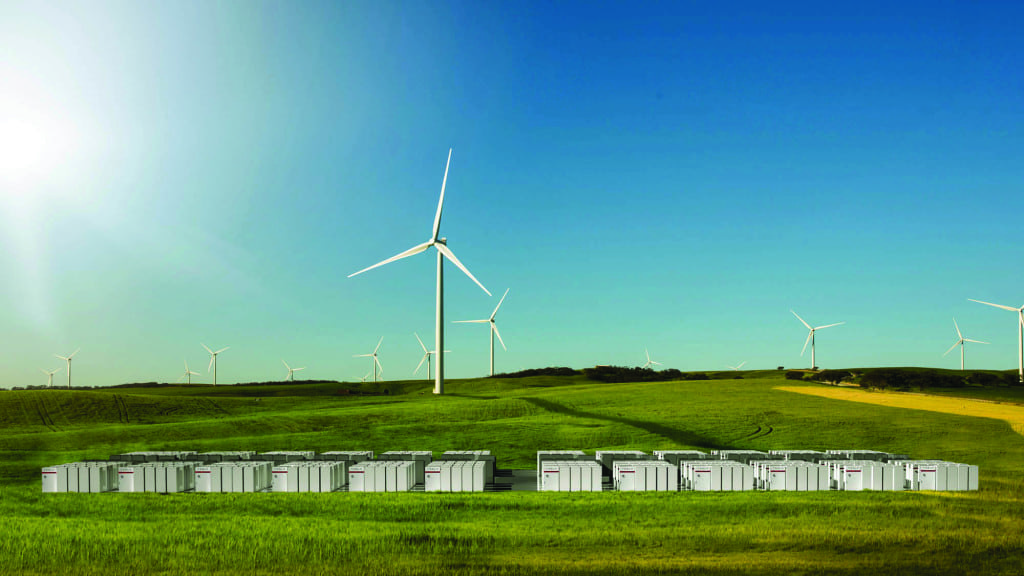Tesla to Install World's Largest Lithium-Ion Battery Storage Project
A lithium-ion battery under development by Tesla in South Australia (SA) will be the world’s largest of its type when completed by the end of the year. Through a competitive bidding process, Tesla was selected in July 2017 to provide the 100-MW/129-MWh Powerpack system.
The battery storage project (Figure 1) will store energy from the Hornsdale Wind Farm operated by renewable energy provider Neoen near Jamestown, SA. “Working in close collaboration with the South Australian Government and Neoen, this grid scale energy storage project is not only sustainable, but will help solve power shortages, reduce intermittencies, and manage summertime peak load to improve the reliability of South Australia’s electrical infrastructure,” according to a Tesla press release.
The Hornsdale Wind Farm consists of roughly 100 wind turbines generating approximately 1,050 GWh of renewable electricity into the national power grid each year. According to the project website, the wind farm is roughly 80% complete.
It is hoped that the project will help address SA’s problem with blackouts. Famously, in September 2016, a massive storm knocked out electricity to 1.7 million residents. Already in 2017, additional—though less wide reaching—power outages have left tens-of-thousands of residents without electricity during hot summer days.
The September 2016 blackout was determined to be due in part to the state’s large percentage of renewable energy generation. “The generation mix now includes increased amounts of non-synchronous and inverter-connected plant. This generation has different characteristics to conventional plant, and uses active control systems, or complex software, to ride through disturbances. With less synchronous generation online, the system is experiencing more periods with low inertia and low available fault levels, so AEMO is working with industry on ways to use the capability of these new types of power generation to build resilience to extreme events,” according to a March 2017 Australia Energy Market Operator (AEMO) report concerning the event.
Wind generation in the state is significant, accounting for one-third of the total power mix in 2014–2015, according to the National Department of Industry, Innovation, and Science.
The AEMO report says three transmission lines were damaged during a September 28, 2016, storm. The storm produced tornadoes with wind speeds up to 260 kilometers (km) per hour. Two of the tornadoes almost simultaneously damaged a single circuit 275-kV transmission line and a double circuit 275-kV transmission line, roughly 170 km apart. The damage to those transmissions lines caused them to trip, which set off a serious of faults that resulted in six voltage dips on the grid in just two minutes.
“As the number of faults on the transmission network grew, nine wind farms in the mid-north of SA exhibited a sustained reduction in power as a protection feature activated,” the AEMO report explains. “For eight of these wind farms, the protection settings of their wind turbines allowed them to withstand a pre-set number of voltage dips within a two-minute period. Activation of this protection feature resulted in a significant sustained power reduction for these wind farms. A sustained generation reduction of 456 megawatts (MW) occurred over a period of less than seven seconds.”
As the wind farms failed, demand was increased for imported power flowing through the Heywood Interconnector, which allows for power flows between SA and Victoria. “Approximately 700 milliseconds (ms) after the reduction of output from the last of the wind farms, the flow on the Victoria–SA Heywood Interconnector reached such a level that it activated a special protection scheme that tripped the interconnector offline,” the report says.
The Tesla Powerpack project will be able to provide enough power for more than 30,000 homes. “In addition, Tesla’s Powerwall is now being installed for residential customers across Australia and ramping up quickly. The same technology that can help stabilize the South Australian grid can also be used by homeowners to collect energy during the day so it is stored and made available day and night, providing uninterrupted power even if the grid goes down,” the press release says.
—Abby Harvey is a POWER reporter.
